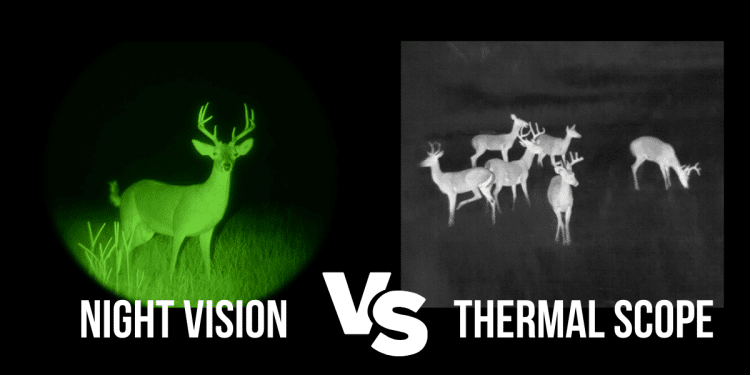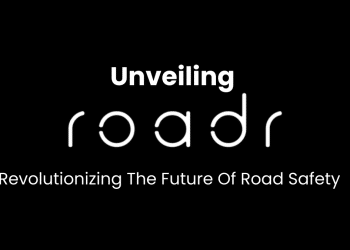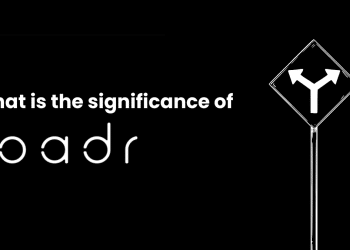Night vision versus thermal scopes offers distinct advantages in low-light conditions. While night vision amplifies ambient light for visibility, thermal scopes detect heat signatures. Both technologies excel in enhancing visibility but differ in their operational mechanisms.
Have you ever imagined seeing in the dark like a superhero? That’s where night vision vs thermal scopes come in! It’s like having special goggles that help you see in the dark or find things that give off warmth, like when your hands feel warm after playing outside.
Night vision goggles are like magic glasses that brighten up the dark using tiny lights. They make it easier to see in dim places. On the other hand, thermal scopes are like super eyes that can find heat. They’re like having a special power to sense heat, just like superheroes in movies!
These gadgets show us things that give off heat, such as animals in the dark or even leftover warmth from things we can’t see. But wait, how are these scopes different, and which one might be better for certain situations? Let’s find out by exploring the amazing world of night vision versus thermal scopes.
What is night vision vs. thermal vs. infrared?
Night vision, thermal imaging, and infrared technologies each offer unique ways to perceive the world in low-light conditions, but they operate differently.
Night vision amplifies existing light to enhance visibility in dim environments, resembling the natural adaptation of human vision in darkness. It works well on nights with moonlight or in places with minimal light available.
Thermal imaging detects heat emitted by objects, generating images based on temperature differences. It excels in total darkness, making it perfect for spotting warm objects or living beings by their heat patterns.
Infrared technology covers a broader range, encompassing both night vision and thermal imaging. It’s used in various fields, such as security systems and medical checks, utilizing different wavelengths for specific tasks.
Each technology has unique strengths: night vision provides clarity in low-light situations, while thermal imaging excels in complete darkness. Understanding their differences helps in selecting the right one for various needs, whether for hunting, surveillance, or scientific exploration.
The difference: Thermal scope vs. night vision

Thermal scopes detect heat emitted by objects or living beings, creating clear images that help locate things in the dark. They function like special glasses that reveal warm objects, such as your pet cat in the dark or a squirrel up a tree.
Night vision goggles, on the other hand, use specialized technology to enhance vision in darkness, akin to magical eyewear that brightens the night. They amplify available light, making it easier to see in deep darkness or uncover hidden elements in shadows.
What sets them apart? Thermal scopes identify warm objects by detecting their heat signatures, while night vision goggles amplify existing light to illuminate dark environments. Each has its strengths: thermal scopes excel in spotting warm objects like animals or people in darkness, while night vision goggles significantly improve overall visibility in very dark settings.
Imagine a nighttime game of hide and seek: with a thermal scope, you could detect friends hiding under blankets due to their body heat. With night vision goggles, you’d have a clearer, brighter view, making it easier to find friends in the dark.
Both thermal scopes and night vision goggles are invaluable tools, each using distinct methods to enhance vision in low-light conditions. Depending on specific needs and surroundings, one may prove more beneficial than the other. It’s incredible how technology expands our ability to perceive the world, offering unique perspectives in varying conditions.
Night vision or thermal: Working, applications and uses
Night vision or thermal imaging technologies function uniquely to enhance visibility in challenging conditions. Here are some of their working applications and uses:
- Thermal
How they work
Thermal scopes are like special glasses that can spot warmth. They work by detecting the heat given off by objects, animals, or people and then showing these as colorful images based on their temperature differences. Imagine seeing a cat hiding in the dark or a person behind bushes just because they’re warm! However, night vision goggles don’t detect heat; instead, they enhance our vision in darkness by utilizing available small amounts of light. These goggles act as enchanting glasses that amplify the darkness, somewhat akin to when your eyes gradually adapt to low-light environments.
Applications
Thermal scopes are excellent at spotting warmth in complete darkness, making them really useful for hunting animals or finding people hiding at night. They’re commonly used by the military, in search missions, and for night hunts. Night vision goggles, however, illuminate the darkness, allowing clear vision at night without requiring flashlights. They’re utilized by both the military and outdoor enthusiasts for exploring at night or in areas with limited light.
Visual representation
When using a thermal scope, the images you see are all about temperature – warm things show up as different colors, making them stand out against cooler backgrounds. Night vision goggles give you a greenish view by intensifying the small bits of light available. While they make things clearer in the dark, the images might not have as much detail as thermal scopes vs night vision.
Advantages and limitations
Thermal scopes are excellent for finding warm things, even in pitch darkness. Yet, they can only identify warmth without providing visual details of the object. Night vision goggles improve vision in dim light conditions, yet they are ineffective in complete darkness without any light source. Night vision vs thermal scopes have a limited range when compared.
Practical uses
Thermal scopes are often used for hunting in darkness or when visibility is poor. They’re also employed in surveillance where there’s total darkness. Night vision goggles are ideal for moving around at night without lights and are frequently used in military operations and activities such as camping in places with low light.
- Night vision
How night vision works
Night vision goggles function by gathering faint light found in darkness, which might originate from sources like the moon, stars, or streetlights. They then enhance this collected light to render objects visible, resulting in a sharper image that facilitates improved vision in low-light situations.
Applications
Night vision goggles find widespread use across different sectors. Military members use them for night missions to gain an edge, while law enforcement employs them for surveillance in dimly lit zones. Nature lovers use these goggles to observe nocturnal animals, and outdoor enthusiasts find them useful for activities like hiking and camping in the dark.
Visual representation
When using night vision goggles, the world appears in shades of green. This greenish hue is due to the technology used to amplify the available light. Although the images may lack color, night vision goggles provide a clear and enhanced view in low-light environments.
Advantages and limitations
Night vision goggles provide a notable advantage by improving visibility in low-light conditions without needing additional light sources. However, they do have constraints, particularly in areas where there’s no ambient light, as they depend on some available light to function effectively.
Additionally, their operational range might be restricted in comparison to alternative night vision devices available in the market.
Practical uses
Night vision goggles have diverse uses, being used by the military and police for surveillance, missions, and strategic operations in low-light situations. Outdoor enthusiasts also use them for navigating or observing wildlife at night. These goggles are highly valuable for improving vision in dimly lit environments.
What is better: night vision or thermal?
Deciding between night vision vs. thermal imaging is better depends on the specific situation or purpose. Each technology has its advantages and limitations:
- Night vision

Advantages
- Works well in low-light conditions by amplifying existing light.
- Provides a clear view, allowing for depth perception.
- Suitable for navigation in low-light environments.
Limitations
- Ineffective in complete darkness without any light sources.
- Limited range of night vision vs. thermal imaging.
- Provides a monochrome, green-tinted view.
- Thermal imaging
Advantages
- Detects heat signatures, useful for spotting warm objects or living beings in complete darkness.
- Effective in total darkness as it doesn’t rely on ambient light.
- Shows colorful images based on temperature differences.
Limitations
- Less detailed visual representation compared to night vision.
- Can’t provide specific details or shapes of objects, only their heat signatures.
- Some weather conditions might affect its effectiveness.

Deciding which technology is better depends on the specific use case. For example, in scenarios where spotting warm objects or living beings in complete darkness is crucial (like hunting at night), thermal imaging might be more effective. Conversely, if clear and detailed vision in low-light conditions is needed (such as navigating in the dark), night vision might be the preferred choice.
Therefore, in night vision vs. thermal imaging, none is inherently “better” overall. The best choice depends on the specific needs and conditions of the situation. Each technology offers unique benefits, and the decision should be based on the intended use and environmental factors.
Night vision vs. thermal scope for hunting
When choosing between night vision or thermal scopes for hunting, understanding their distinctions is crucial:
Night vision for hunting
Night vision vs thermal scopes tech boosts available light, a useful aid for hunters in dim settings. It enhances sources like the moon or starlight to give a clearer view, helping navigate in low visibility at dawn or dusk. Night vision gear helps hunters spot games or move stealthily in the dark without artificial light. Yet, it might struggle in completely dark places with no light, reducing its usefulness there.
Advantages of night vision for hunting
- Enhanced visibility in low-light conditions, such as at dawn or dusk.
- Enables stealthy movement without the need for additional light sources.
- Useful for navigation and spotting game in partially lit environments.
Limitations of night vision for hunting
- Ineffective in completely dark environments without any ambient light.
- Limited range of night vision vs thermal imaging in total darkness.
- May not provide detailed visuals of the hunted game or surroundings.
Thermal imaging for hunting
On the flip side, thermal imaging works by finding heat given off by living creatures or objects that are warm. It doesn’t need ambient light, so it’s excellent for hunting in complete darkness. Hunters using thermal scopes can see warm-blooded animals, such as deer or hogs, even in total darkness or thickly covered areas where it’s hard to see. Thermal imaging helps track injured animals by detecting their body heat. However, it might not show detailed visuals or help identify the species or specific features of the target because it focuses on heat patterns.
Advantages of thermal imaging for hunting
- Effective in total darkness or dense cover where ambient light is minimal.
- Enables hunters to detect warm-blooded animals or targets based on heat signatures.
- Helpful for tracking wounded game by detecting body heat, aiding in recovery.
Limitations of thermal imaging for hunting
- Inability to provide detailed visual identification or species recognition.
- Limited range when compared to daylight vision.
- Costlier compared to some night vision options.
In hunting scenarios, the choice of night vision vs. thermal imaging depends on various factors like the hunting environment, time of day, and the specific needs of the hunter. Night vision excels in partially lit conditions and offers clearer visual details.
Meanwhile, thermal imaging performs exceptionally well in complete darkness or areas with minimal ambient light, aiding in detecting warm targets based on their heat signatures. Some hunters even use both technologies simultaneously, leveraging their unique advantages for a more comprehensive hunting experience.
Conclusion
In the world of seeing in the dark, both night vision versus thermal scopes offer unique superpowers. Night vision excels in enhancing visibility in low-light conditions but falters in complete darkness, relying on at least minimal ambient light. Thermal scopes excel in detecting heat signatures in total darkness but may lack detailed visual information.
Both technologies are incredible, offering specialized advantages tailored to specific situations, making them indispensable tools in various fields, from hunting to military operations. The choice between night vision versus thermal scopes ultimately relies on the specific environment and requirements at hand, each offering its unique advantages for illuminating the unseen.
- “As chicaadmin at The Chicago Weekly, I curate trending national and international news stories with a focus on social justice and cultural impact. My passion for journalism and commitment to independent media are fueled by my Chicago roots and belief in the power of storytelling to connect communities. Follow me on Twitter for insightful commentary and news updates!”












